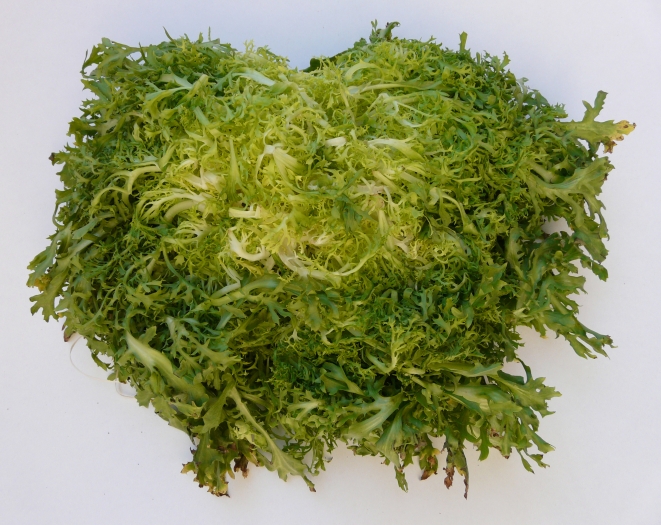Cultivated Endive
(Cichorium endivia)
Cultivated Endive (Cichorium endivia)
/
/

Consell Comarcal del Baix Empordà
CC BY-SA 2.0
Image By:
Consell Comarcal del Baix Empordà
Recorded By:
Copyright:
CC BY-SA 2.0
Copyright Notice:
Photo by: Consell Comarcal del Baix Empordà | License Type: CC BY-SA 2.0 | License URL: https://creativecommons.org/licenses/by-sa/2.0 | Uploader: Kippelboy | Publisher: Wikipedia Commons |













Estimated Native Range
Summary
Cichorium endivia, commonly known as Cultivated Endive, is a biennial herb often grown as an annual, originally from the Middle East. It typically reaches a height and width of 0.5-1 feet (0.2-0.3 meters). Endive forms a rosette of leaves that vary in shape and are used in salads. The plant produces small, blue, daisy-like flowers in the summer and fall, which are less noticeable compared to its foliage. The leaves can range from pale green to dark green with a slightly bitter flavor.
Cultivated Endive is valued for its edible leaves, which are a common ingredient in salads and other dishes for their unique flavor and texture. It is also appreciated for its ease of growth and relatively low maintenance requirements. In the garden, it is often used in vegetable plots, raised beds, and containers. Endive prefers full sun to part shade and requires consistent moisture in well-drained soils. It is susceptible to pests like aphids and diseases such as powdery mildew. To avoid bolting, which occurs in response to long daylight hours and high temperatures, it is best to plant endive in the cooler parts of the growing season.CC BY-SA 4.0
Cultivated Endive is valued for its edible leaves, which are a common ingredient in salads and other dishes for their unique flavor and texture. It is also appreciated for its ease of growth and relatively low maintenance requirements. In the garden, it is often used in vegetable plots, raised beds, and containers. Endive prefers full sun to part shade and requires consistent moisture in well-drained soils. It is susceptible to pests like aphids and diseases such as powdery mildew. To avoid bolting, which occurs in response to long daylight hours and high temperatures, it is best to plant endive in the cooler parts of the growing season.CC BY-SA 4.0
Plant Description
- Plant Type: Herb
- Height: 0.5-1 feet
- Width: 0.5-1 feet
- Growth Rate: Moderate
- Flower Color: Blue
- Flowering Season: Summer, Fall
- Leaf Retention: Deciduous
Growth Requirements
- Sun: Full Sun, Part Shade
- Water: Medium
- Drainage: Slow, Medium, Fast
Common Uses
Bee Garden, Border Plant, Butterfly Garden, Edible*Disclaimer: Easyscape's listed plant edibility is for informational use. Always verify the safety and proper identification of any plant before consumption., Potted Plant
Other Names
Common Names: Curly Endive, Endive, Escarole, Гладкоплодна Синя Жлъчка, Čekanka Štěrbák, Endivie, Escarola, Escarola Crespa, Chicon, Chicorée
Scientific Names: , Cichorium endivia, Cichorium endivia var. crispum, Cichorium endivia var. latifolium, Cichorium endivia var. endivia, Cichorium endivia subsp. endivia, Tanacetum vulgare f. crispum, Cichorium sativum, Cichorium casnia, Cichorium crispum
GBIF Accepted Name: Cichorium endivia L.